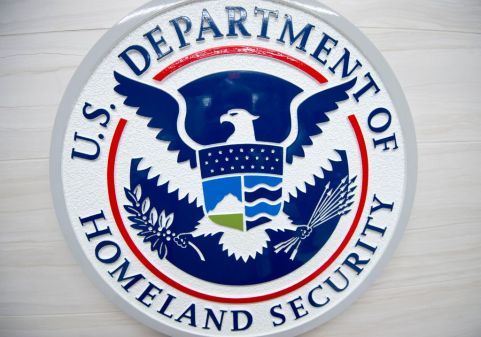 Dan Tangherlini, GSA administrator, has helped save the agency more than $24 million in fixed costs by consolidating office space. (File photo: FedScoop)
Dan Tangherlini, GSA administrator, has helped save the agency more than $24 million in fixed costs by consolidating office space. (File photo: FedScoop)The office of the administrator of the General Services Administration is 1,600 square feet. That’s bigger than the average one-bedroom apartment in D.C.
It’s also the office Daniel Tangherlini has moved out of to send a message to the other GSA employees who will relocate to their new collaborative offices this week.
Tangherlini expressed excitement at the prospect of having everyone in GSA’s new offices, and he says other agencies are excited too.
“Agencies have been coming in droves to see the new space; at least one cabinet secretary has come and visited,” Tangherlini told FedScoop. “People are excited at the idea of literally ripping down barriers and finding way to create collaborative environments and more opportunity for informal interaction.”
So far, the initiative has saved $24 million a year in rent by consolidating six leases into 1800 F Street. Tangherlini said the spinoff savings have totaled $8 million so far, and he expects to see more. Not taking this step is a luxury GSA no longer has, Tangherlini added.
The idea of space consolidation is just another way Tangherlini says he’s working to make GSA more accountable to the agencies and citizens it serves. But sharing overall happens in other areas, too.
“We want to be really aggressive about sharing data with agencies and letting them know how they stack up against each other and how we stack up against them in basic administrative service provision,” Tangherlini said. “We’re holding ourselves accountable for the being the lowest-cost, highest-value provider.”
These services include one particular area thrust into the spotlight more recently: procurement.
“In government, we definitely need to figure out how to streamline procurement, make it more simple and more transparent,” Tangherlini said.
Tangherlini worries people will shift their entire focus of the healthcare.gov debacle onto the procurement side. He acknowledges there are flaws with the procurement system, but there is a lot of thought that should be going in pre-procurement and the execution of procurement from the government side.
“We shouldn’t use the big substantial problems associated with this project to divert ourselves from the fact that there is before-procurement and after-procurement responsibilities that we have as government managers and vendor providers to get some sense of the outcome we’re trying to achieve,” Tangherlini told FedScoop.






